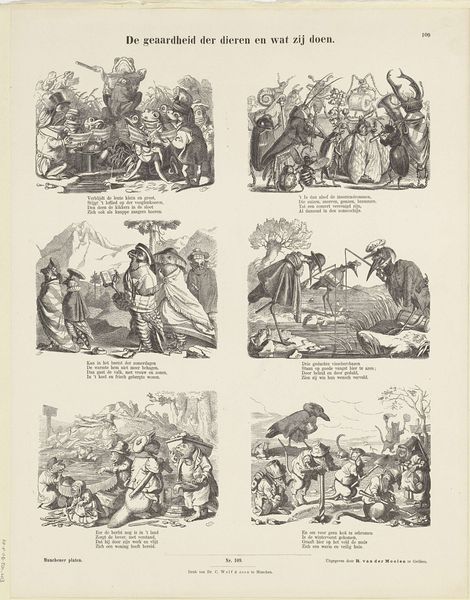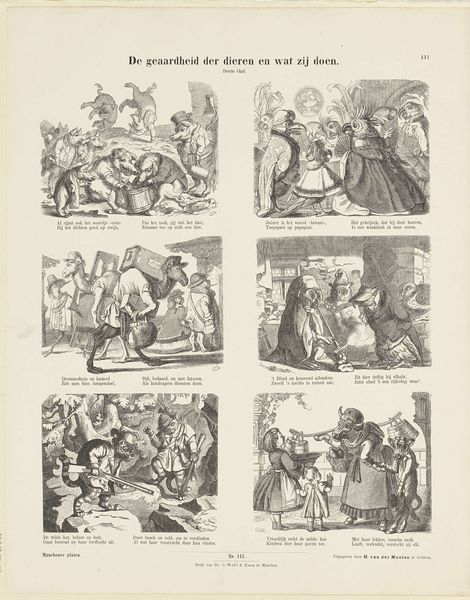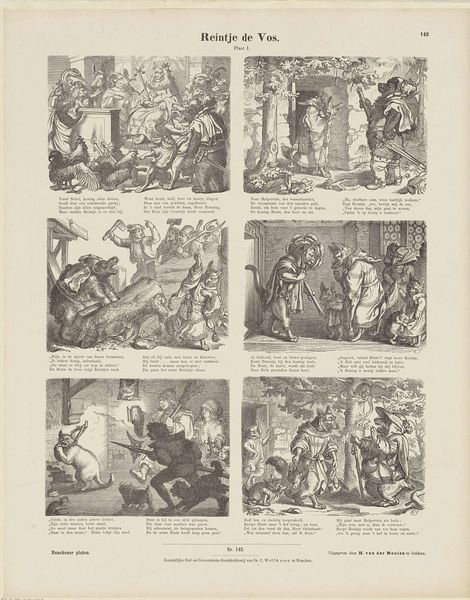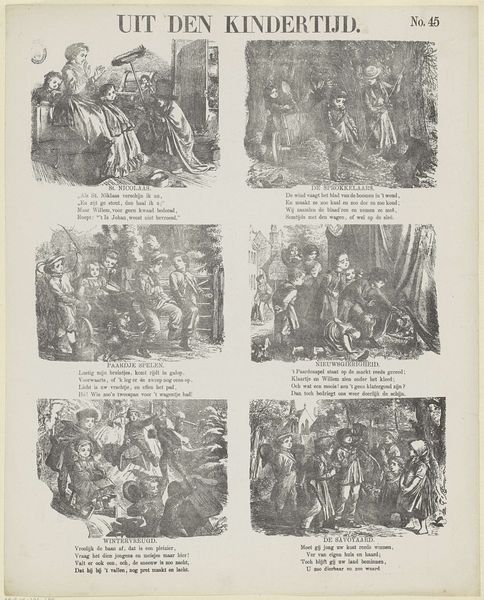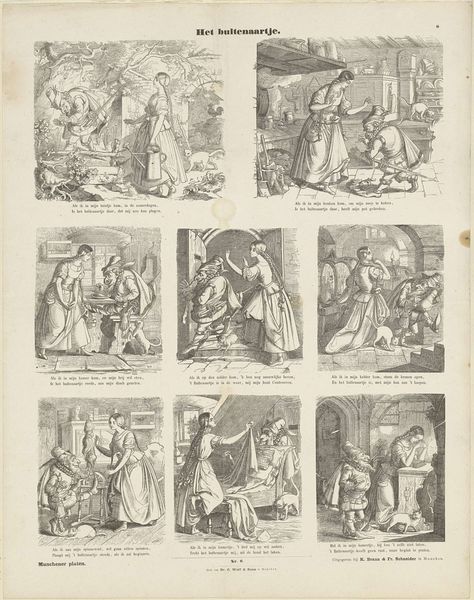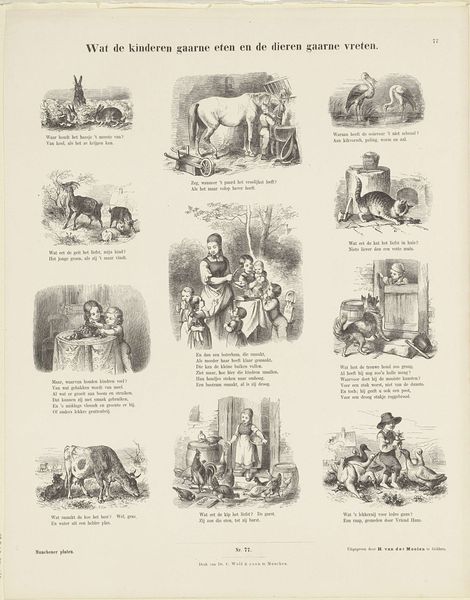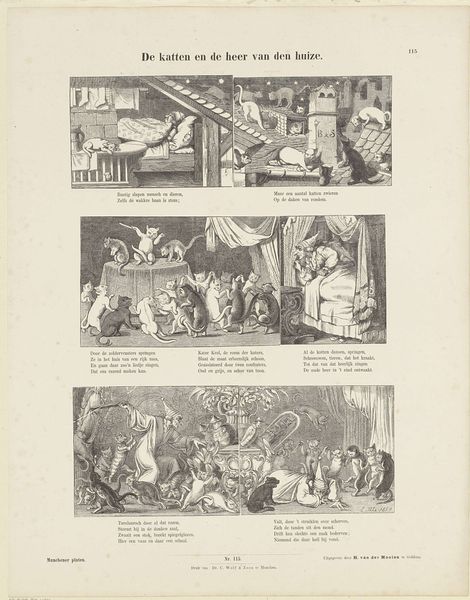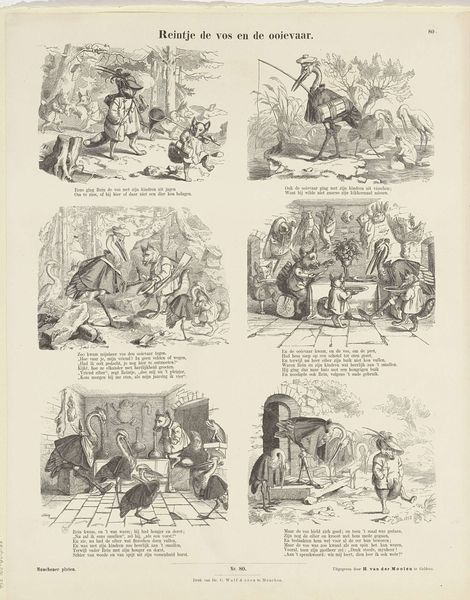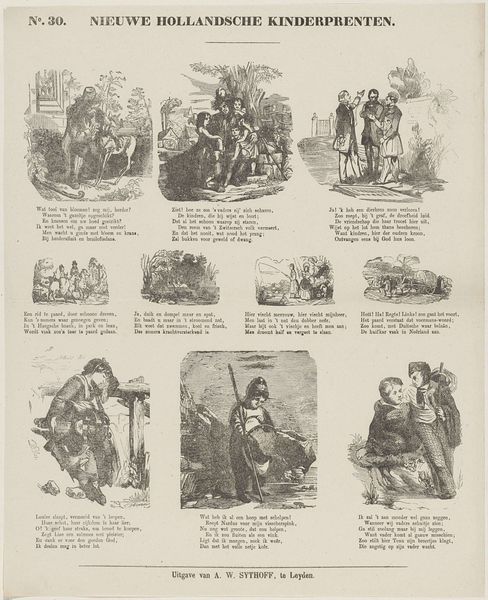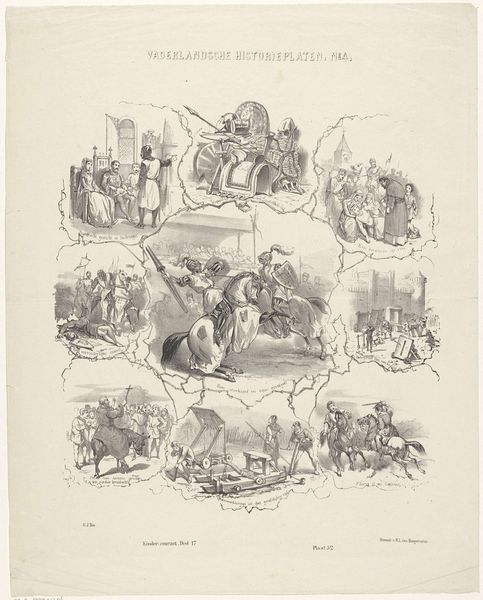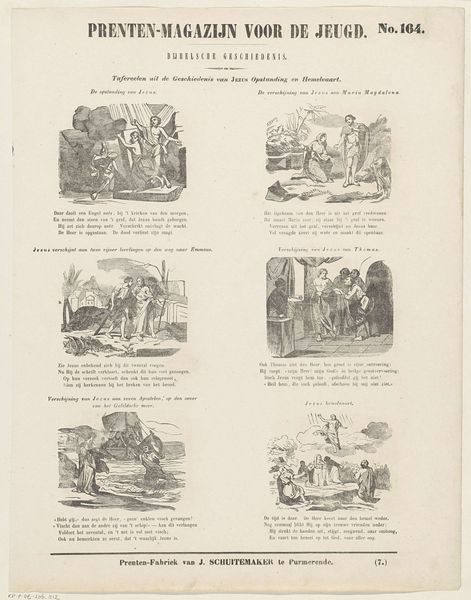
print, engraving
#
narrative-art
# print
#
folk-art
#
genre-painting
#
engraving
Dimensions: height 443 mm, width 349 mm
Copyright: Rijks Museum: Open Domain
Curator: This is an engraving from 1863 entitled "De geaardheid der dieren en wat zij doen" which roughly translates to "The Nature of Animals and What They Do." It is by the artist E. Ille. Editor: Visually, it’s striking. The composition is broken into smaller vignettes that carry their own narratives. There is a rather cynical and unsettling undertone. Curator: The artist presents various scenarios, each depicting animals acting in ways that reflect human behaviors and societal norms. We can interpret the use of animal figures as a form of social commentary, a common device in satirical art. Notice the use of anthropomorphism— animals in clothes, engaged in human-like trades and struggles. Editor: It’s true; these aren't just depictions of animals. The scenes touch upon themes of labour, class, survival, and morality—concerns that resonate across the human experience, no matter the period. It speaks volumes about humanity's self-image if this is the vision of the “animal.” Curator: One can consider the arrangement of these vignettes. They create a visual network which might propose a hierarchy. Each narrative square may be viewed as independent of each other, but could it be the artist alludes to the codependency of the social system? The artist shows rather distinct activities ranging from conflict to wealth. Editor: Exactly. The scale further contributes to the narrative's tone. Each tiny world pulses with both whimsy and brutality. One might argue the artwork suggests the inescapable cycle of conflict and labor. How is nature here but to be a mere reflection of culture? Curator: These are rendered in quite fascinating linear patterns to enhance their textual and moral significance, suggesting the meticulousness of rules governing both the animal and human worlds. We could understand it through structuralist frameworks— to analyze the systems of opposition and relationships through binary sets: civilized/animal, wealth/poverty, predator/prey. Editor: That sounds a little sterile... but that attention to contrast serves to provoke discomfort. It doesn’t present these relationships as easily separated—perhaps offering space for new political projects rooted in allyship across societal hierarchies. Curator: A challenging but vital idea to leave us contemplating today. Editor: It certainly is.
Comments
No comments
Be the first to comment and join the conversation on the ultimate creative platform.
